Sunday Times 2
The body in the garage
BY 9.00 a.m. on the day of the murder, possibly the most-talked about murder ever in this country, the servant boy had already started on the lunch. The rice was on the boil, on a firewood-fed stove in the pantry, and two vegetables were cut, sliced and ready for cooking. The next step was to scrape a coconut.
The scraping of the coconut never took place, however. For that matter, the lunch was never made. There was an interruption, a decisive one. The servant boy would not get back to preparing the midday meal because a murder was about to happen.
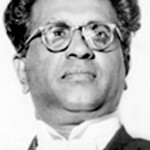
Dr. Colvin R. de Silva led the defence in the Sathasivam trial
Hewa Marambage William, a 19-year-old villager from Matara who had taken up employment at the Sathasivam residence 11 days earlier, had just sat down on the low seat of the coconut scraper and begun to grate the coconut when someone walked into the kitchen.
This is where the first half of our story ends and the second half, the mystery part, begins. The interruption is the defining moment. It is the cliff-hanger to end a chapter if this were a detective novel, or an episode if this were a TV serial. If this was a movie, it is the moment the background music turns menacing and the camera pans from a close-up of the servant boy’s hands on the coconut to his surprised face as he looks up to see the person, barefoot or shod, who is walking towards him. Who stepped into the kitchen is the big question.
That interruption is the hard nut at the heart of the famous case in which Mahadeva Sathasivam, along with servant boy Hewa Marambage William, stood charged for the murder of Ananda Sathasivam. To date, 63 years after the fact, no one knows with certainty who it was who walked into the kitchen at that point.
The story bifurcates here, one path leading upstairs, the other tracking around the kitchen and heading towards the adjacent garage.
In his testimony in court, Hewa Marambage William said the master of the house walked into the kitchen, held him firmly by the arm, and led him up the stairs, saying his assistance was required for a killing.
The defence held that it was the lady of the house who stepped into the kitchen, and that it was in the kitchen that she was strangled and her body then removed to the adjacent garage.
Hewa Marambage William told his master that he did not want to be a party to the crime, and that he wished to leave the house immediately, without his 11-days’ pay. The master dragged the boy along regardless. The two men entered the master bedroom to find Ananda Sathasivam seated on the bed. The master caught the lady by her hair with one hand, her neck with the other, and thrust her down onto the floor and strangled her. The boy was ordered to hold down the lady’s struggling body. When the body ceased to struggle, the two men took it downstairs and placed it in the garage. The master removed the gold thaalikody from his wife’s neck, and other items of gold and gave them to the boy. The boy left the house minutes later. The next time master and servant would see each other would be in Hulftsdorp, on opposite sides at the Supreme Court trial.
The servant boy’s account moves forward with the logic of a credible story; the arc of his narrative runs parallel with the arc of the two men’s physical movements in the house – from kitchen to upstairs bedroom and back again along the same path, down into the kitchen and on into the garage. The parabola of the servant boy’s narrative ends at a point a little further from its starting point.
That is the Bedroom Murder version.
The Kitchen Murder version is the scenario outlined by the defence, led, most ably, by barrister and politician Dr. Colvin R. de Silva.
The defence has no proven explanation for Ms. Sathasivam’s appearance in the kitchen. Ananda Sathasivam was, to the best of everyone’s knowledge, a quiet, retiring person who kept to herself, and to her rooms upstairs. Her life was her family. When her two elder children left for school every morning, she would say bye not from the garden gate or the front door but the landing at the top of the stairs.
The defence conjectured that Ms. Sathasivam came down, barefoot, to speak to the servant boy about the lunch. Like many Colombo women, Ananda Sathasivam would be barefoot much of the time in her home, explained one witness.
But would any lady of any respectable house walk barefoot into a kitchen she knows to have a grimy, dirty, or unswept floor? Question for the defence.
On seeing Ms. Sathasivam, the servant boy responded in a way that not even he might have foreseen.
According to the defence, Hewa Marambage William, who was down on a low-level kitchen property that sits just inches above floor level, looked up to see a diaphanously clad Ms. Sathasivam (voile saree, silk petticoat) and was seized with a wild impulse, or several wild impulses. He is alleged to have attacked the lady of the house with intent to molest, steal and murder — all three criminal acts following in furious, murderously fast succession.
It’s a stretch, but it’s the defence’s story, and the defence won the case.
The defence would have the world imagine that a penniless village boy who had come to the city to improve his prospects, and with difficulty found employment with a decent, well-known, well-connected Colombo family, and settled in nicely, learning to cook and striving to please all – that this 19-year-old, who would have looked up to his employers as a gift from heaven, had – on impulse, while carrying out his chores – leapt up like a wild creature and attacked on sight the lady of the house, then murdered her and stolen her jewellery. Sexual attack, robbery, murder. Hewa Marambage William had achieved all three extreme criminal acts in minutes, or seconds, and all on impulse, in the middle of making lunch.
It’s a stretch, by any account. A tall, fast, action-packed tale of spontaneous crime if ever there was one.
It is the story the jury bought.
On a 1-to-10 scale of plausibility, we would have to give the Bedroom Murder Version at least 9 points and the Kitchen Murder Version at best 1 point. One version is believable, the other has the credibility of a murder mystery set on planet Mars.
Alternative scenarios
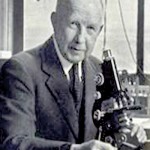 |
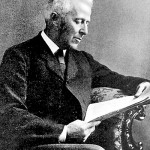 |
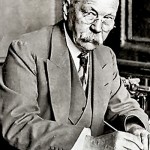 |
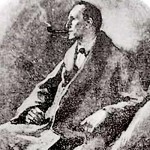 |
| Edinburgh products, from left to right:
Sir Sydney Smith, the forensic specialist who was described as the spiritual successor of Dr. Joseph Bell, the great University of Edinburgh teacher who taught Sir Arthur Conan Doyle and was the model for Doyle’s creation Sherlock Holmes, the world’s most famous fictional detective. |
|||
There are other alternative scenarios that merit consideration.
Consider the possibility that no one walked into the kitchen.
Hewa Marambage stops scraping the coconut on hearing his name being called from upstairs. He gets up to answer the summons, heads upstairs and talks to Ms. Sathasivam, or Mr. Sathasivam, or both.
Or consider the possibility that it was Mr. Sathasivam who walked into the kitchen – to give the servant boy certain instructions – and then leaves the house. It is 10.30 a.m. Ms. Sathasivam is upstairs.
Neither possibility can be ruled out.
Before we go into the garage of No. 7, the other half of the crime scene, let us stop for a moment and inspect the kitchen and the pantry.
There’s the coconut scraper, with a single milk-white strand of kernel hanging on the edge of the black blade. And there is the stove with two saucepans containing the two cut-and-peeled vegetables for the day’s lunch. And there’s the pot of rice put to boil. The floor of the kitchen and pantry needs sweeping.
And there on one wall is the detail that gave Sir Sydney Smith, the world-famous forensic expert who came to give evidence at the trial, such satisfaction when he saw it.
From his laboratory in faraway Edinburgh, Sir Sydney Smith posited the presence of a feature in the kitchen of the Bambalapitiya residence to explain injury No. 18, the puzzling contusion found on the back of the victim’s body. Sir Sydney believed the injury was caused by the body coming in violent contact with a small projection on a kitchen wall or door.
The first thing Sir Sydney did on arriving in Colombo after his flight from Britain was to visit the Sathasivam home and check the kitchen. To his “delight” (his word), he found what he was looking for – a brass fitting nailed into the wall at a height that could explain injury No. 18. It was an ingenious piece of deduction.
The prosecution said injury No. 18 would have been caused by the victim’s body hitting the edge of the bed while she struggled with her assailant(s).
The air of Edinburgh
There must be something in the air of Edinburgh, Scotland, that is extraordinarily conducive to deductive reasoning, an essential skill for any forensic student.
Sir Sydney Smith, a New Zealander, was Regius Professor of Forensic Medicine at the University of Edinburgh, from 1928 to 1953. Sir Sydney was often spoken of in the same breath as Dr. Joseph Bell, the famous 19th century Scottish forensic expert who taught for 50 years at the medical school of the University of Edinburgh. He would tell his students that to become good doctors, they must first learn to use their eyes, and use them well. “Most people see, but they do not observe,” Dr. Bell would say. Deductive reasoning follows from close observation.
One of Dr. Bell’s students was the writer Sir Arthur Conan Doyle. Born in Edinburgh, Conan Doyle studied at the Edinburgh University medical school till 1881. Doyle was a failure as a doctor and turned to writing as a career, which took off famously after he turned to his teacher Dr. Bell for inspiration. Dr. Joseph Bell is best known as the model for Sherlock Holmes, the most famous detective of all.
Professor G. S. W. de Saram, the forensic expert who performed the autopsy on Ananda Sathasivam, studied under Sir Sydney Smith in Edinburgh.
In the garage
Now let us go into the garage. This is next to the kitchen. There is a narrow opening between kitchen and garage, which is on a lower level. The garage door is closed and it is dark in here. The Sathasivams do not own a car; they depend on taxicabs and friends with cars to get around. Like any garage without a vehicle, this one is an odds-and-ends space, a storeroom. There is a stack of firewood and a wood pestle and mortar. There is also a children’s rocking horse and a clothes horse. The garage is a container for old, broken and discarded objects.
It is here that the body of Ananda Sathasivam was found, around 3.30 pm on October 9, 1951. (The two youngest children, who were alone in the house after the murder, stumbled on their mother’s body sometime earlier in the day.) Ms. Sathasivam was lying flat on her back. The wood mortar that was lying across her neck was removed by the ayah Ms. Podihamy, who did not know that the Police would want to see the mortar exactly as it had been positioned.
The lady and owner of the house – decent citizen, good mother, sadly long-suffering wife, granddaughter of Sir Ponnambalam Ramanathan, one of the country’s great freedom fighters – ends up broken, discarded and dead on the floor of her garage. A more undignified and terriblean end is hard to imagine.
Photographs of the body in the garage appear in two recountings of the Sathasivam murder case: the out-of-print account by Justice A. C. Alles, and “A Murder in Ceylon,” a 467-page dossier of trial transcripts, medical and legal facts, expert opinions and statements, photographs and graphics, compiled by forensic specialist Professor Ravindra Fernando.
The photographs include a picture of the garage interior, showing the body lying next to stacked household items; a lower-end view of the body with the soles of both bare feet showing clearly, one foot sole soiled, the other almost unsullied and, most disturbing of all, a heartbreaking close-up of the victim’s face.
The eyes are open, the skin bruised, discoloured, scratched and streaked. The face is that of a young, beautiful, and good person. The facial expression is indescribable. It registers surprise, disbelief, excruciating pain. There is an unspeakable sadness, and over all the sorrow and pain a hint of forgiveness.
The photograph of the face of the dead Ananda Sathasivam must be one of the most tragic ever of a homicide victim.
To be continued

